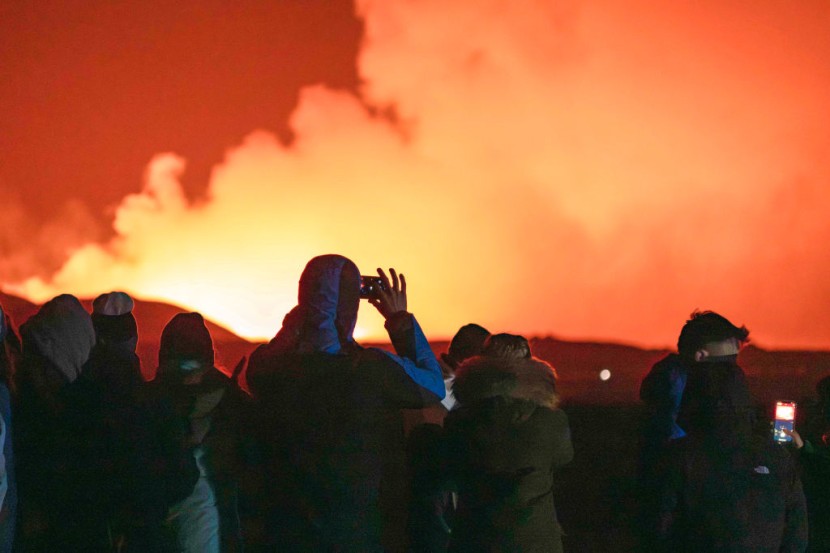
A massive volcanic eruption in Iceland has threatened the seaside town of Grindavík amid forced evacuations.
The eruption at the Sundhnúkur crater spewed lava over 160 feet into the air on Wednesday.
Located on the Reykjanes peninsula in southwestern Iceland, the country's biggest tourist attraction, the Blue Lagoon geothermal spa, was also cleared out.
Most of Grindavik's 4,000 residents were permanently evacuated in November 2023 due to ongoing volcanic activity, according to ABC News.
This is the fifth and most powerful eruption in the region since December and the eighth since the volcanic system became active in March 2021 after 800 years of dormancy.
The eruption began at approximately 12:46 p.m. local time on Wednesday, prompting an intense lava flow surrounding Hagafell volcano to the east and then south towards the Melhólsnáma mine.
The Icelandic Meteorological Office calculated that lava eruptions reached 164 feet high, and the length of the fissure was around 2 miles.
They also cautioned that lava from the southernmost fissure opening is now less than a kilometer from the lava barriers north of Grindavík.
"The first assessment of scientists is that the beginning of this eruption is more powerful than in previous eruptions," the office announced in a statement.
Officials warned that gas pollution would spread southeast of the region and potentially travel east to Selvogur and Ölfus, Iceland.
By Thursday, gas pollution is expected to spread to the northeast and could be felt in the capital area of Reykjavik.
Grindavík is approximately 30 miles south of Iceland's capital city, Reykjavik.
The eruption comes nearly three weeks after the end of a prior eruption that started on March 16 in Hagafell and Stora-Skogfell on the same Reykjanes peninsula, flowing for eight weeks.
© 2026 HNGN, All rights reserved. Do not reproduce without permission.








